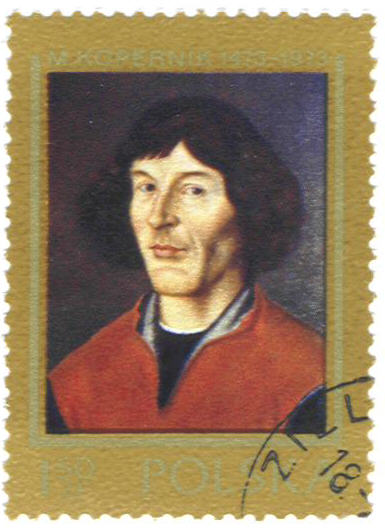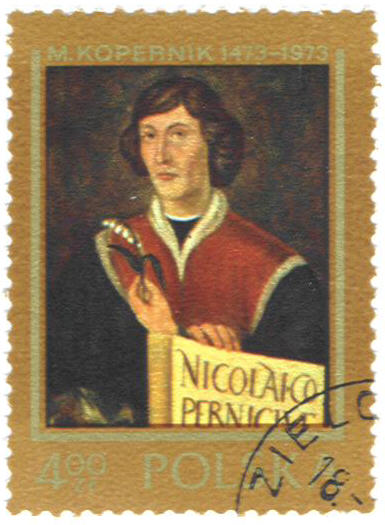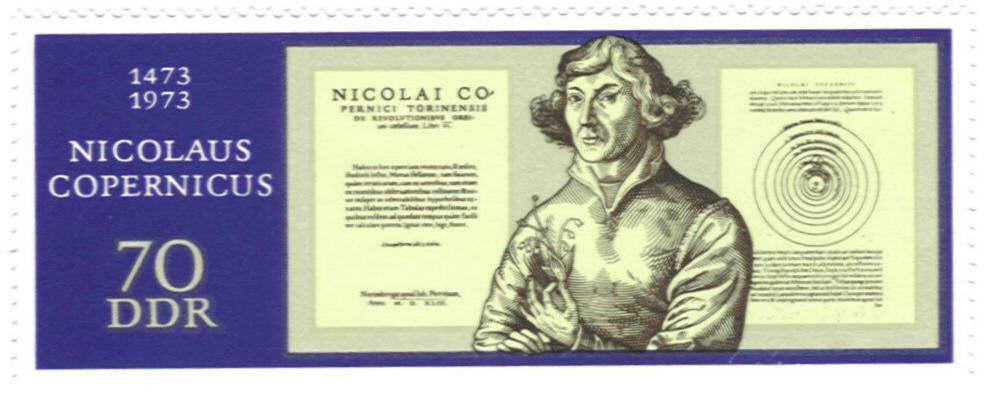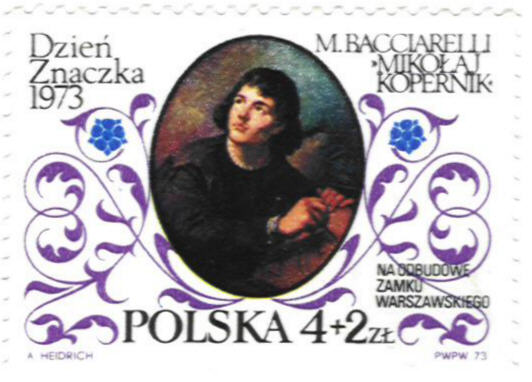Nicolaus Copernicus
Copernicus
was born in Torun, Poland into a middle class family. He started his study of science and mathematics at the University of Cracow, which was a well-respected scientific center. He furthered his scientific studies in Italy, and after teaching for a period of time in Rome, he returned to Poland to serve as Canon of Frauenburg. He was to serve in this administrative position for the rest of his life. He published his revolutionary (many authors have failed to resist this pun) work De Revolutionibus Orbium Coelestium (On the Revolutions of the Heavenly Spheres) in 1543, the year of his death. It is said that he received the first copy of the book on his deathbed. It was the culmination of forty years of work. Of necessity, the book contains many sections devoted to new results in trigonometry together with previously published trigonometric results; most of Copernicus' mathematical contributions are in this field. The mathematical content made the work difficult to understand for many readers; this possibility is recognized in the preface where Copernicus states that the book is intended for mathematically adept readers.
Copernicus was deeply religious and had no heretical intent in espousing his heliocentric theory. In fact, one purpose of his astronomical studies was to make calculations for the Church's liturgical calendar. Copernicus' belief in the heliocentric theory was not based on empirical results, but rather on its simpler, superior mathematical structure. Empirical support for the heliocentric theory had to wait for Kepler's modifications and Galileo's observations. There is a famous quote from the twentieth century physicist James Jeans that says, "From the intrinsic evidence of his creation, the Great Architect of the Universe now begins to appear as a pure mathematician." This could easily have been said five hundred years earlier by Copernicus; it certainly states his beliefs. Indeed, Copernicus believed that God designed and created the universe. He further believed that God's design was mathematical with the everywhere appearing symmetry of nature supporting this belief.
More stamps have been issued honoring Copernicus than for any other mathematician. In 1973, the five hundredth anniversary of Copernicus' birth, almost every country issued stamps, usually in a series, in his honor. It is ironic that the Vatican City did so. It is surprising that the United States did so, for we have rarely honored persons of mathematical achievement. To my knowledge the only US stamps of this nature honor Benjamin Banneker, Copernicus, Albert Einstein, and President Garfield.
Here is a series of stamps honoring Copernicus that Poland issued in 1973.
|

|

|
|
Nicolaus Copernicus
(1473-1543) |
Nicolaus Copernicus
(1473-1543) |
|
Poland (1973), No. 1956 |
Poland (1973), No. 1957 |
| |
|
|

|

|
|
Nicolaus Copernicus
(1473-1543) |
Nicolaus Copernicus
(1473-1543) |
|
Poland (1973), No. 1958 |
Poland (1973), No. 1959 |
| |
|
|

|
|
|
Nicolaus Copernicus
(1473-1543) |
|
|
Poland (1973), No. 1960 |
|
| |
|
Here are some other stamps issued in his honor.
|

|

|
|
Nicolaus Copernicus
(1473-1543) |
Nicolaus Copernicus
(1473-1543) |
|
Hungary (1973), No. 2218 |
German Democratic Republic (1973), No. 1461 |
| |
|
|

|
|
|
Nicolaus Copernicus
(1473-1543) |
|
|
Poland (1973), No. b129 |
|
Here is a first day cover for the stamp that the United States issued in honor of Copernicus in 1973.
|

|
|
Nicolaus Copernicus (1473-1543) |
|
United States (1973), No. 1488 |
Poland has also honored Copernicus by placing his picture on the 1000 Zloty bill. I brought this one home with me when my wife and I were on vacation in Poland in 1993. If my memory serves me right, it was worth less than a quarter at the time.










